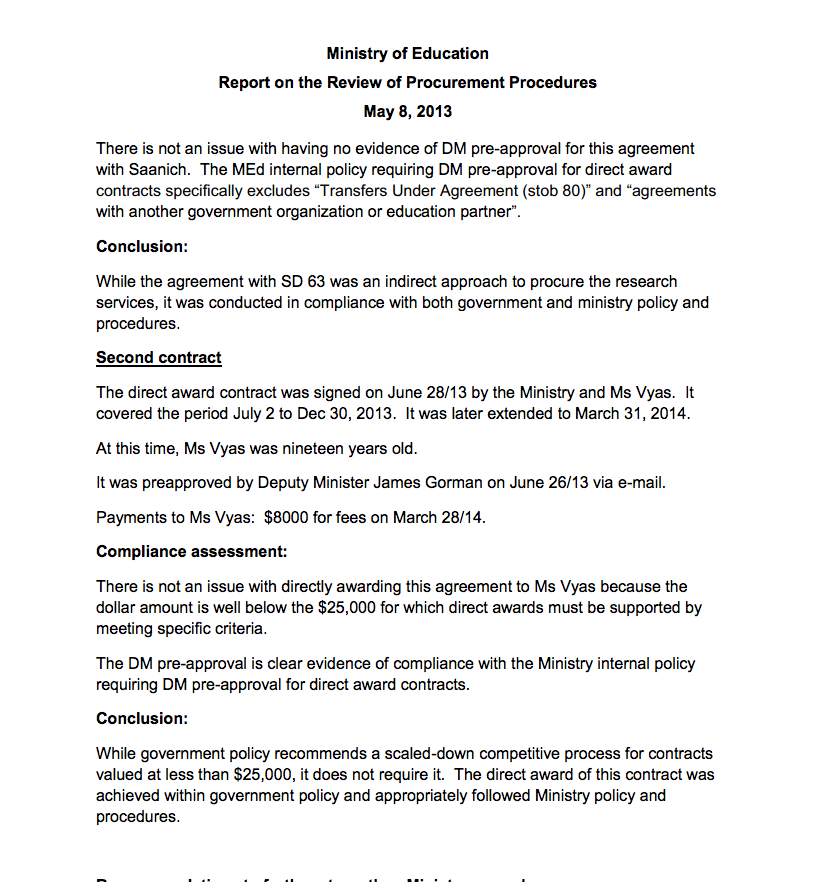In today’s editorial, “Fix Your Problems and Reopen Schools,” editors of The Province declared that the labour dispute between government and teachers in British Columbia is “pretty simple,”
the B.C. Teachers’ Federation wants more and the government says it can’t afford what the union wants. If neither side blinks, and with the government ruling out back-to-work legislation, schools could be closed for a very long time. What gets lost in the rhetoric are facts …
But, in the name of getting to the facts, The Province ignores government rhetoric and attacks teachers’ concerns about class size based on a letter from a reader.
Class size and composition are the key issues in the current dispute. The public would be served by fair and unbiased journalistic analysis of the claims on both sides of the bargaining table, instead the editors chose to offer “facts” that distort, misinform, and mislead readers about issues of class size and teachers’ work.
The Province offers up some facts on class size and in the process illustrates a lack of understanding of the complexity of the concept, conflating class size with student-teacher ratio. For example,
There were 558,985 students enrolled in public schools last year served by 32,658 full-time-equivalent teachers and administrators. If you divide the number of kids by the number of educators, you get 17.1 kids per educator, which might make you wonder about the constant clamour about class sizes.
If you remove administrators, the students were taught by 30,064 FTE teachers, 18.6 students per teacher…
Does this mean that average class size in B.C. schools in 18.6? No, it doesn’t. But, the editors know this because in the next paragraph they state that
The average kindergarten class in B.C. last year had 19.3 kids, an average of 21.5 students were in Grade 1-3 classrooms, and the average was 25.7 and 23 kids in Grades 4-7 and 8-12.
If the editors were not in such a hurry to smear the BCTF as merely a bunch of lazy, greedy teachers, with the singular goal of sucking taxpayers dry, they might have considered what all the “clamour about class size” really is about. Or why so many parents in B.C. are concerned about issues of class size and composition. Or they might have even paused to considered why the first set of facts they offer up is so different from the second set of facts.
Student-Teacher Ratio Stats Intended for Economic Analyses
Student-teacher ratio is not an appropriate tool for understanding class size and its impact on instruction. Instead student-teacher ratio is a tool intended for economic analysis. Student-teacher ratio addresses expenditures on staffing for classroom and specialist teachers. Student-teacher ratios do not represent the actual number of students per teacher in every student’s classroom and, as a result, say very little about what actually happens in the classroom or how human resources are allocated at district, school, or class levels.
Teaching and Group Size
Class size reduction efforts are based on a logical chain of effects: smaller numbers of students in a class produce more intimate learning relationships, which in turn provide opportunities for more in-depth student learning. With smaller classes, teachers are able to be more responsive to individual student needs, which produces more personally satisfying learning for students and higher levels of student achievement. This logic is supported by empirical evidence that illustrates the positive effects of CSR programs worldwide (see this, this, this, this, this, and this).
Some Math to Help Explain the Class Size “Clamour”
If a teacher has five classes with 20 students in each class, the teacher is responsible for 100 students.
If 10 students are added to each of the teacher’s classes, the teacher is then responsible for 150 students—that is a 50% increase in teaching load.
If a teacher with 20 students in each class spends 15 minutes reading, analyzing, and responding to a student’s assignment, that is 300 minutes or about 5 hours of assessment for each class or 25 hours of work to assess a single assignment for students in each of the teacher’s classes.
For a teacher responsible for 150 students (30 students in 5 classes), the time required for marking that single assignment would be nearly 40 hours and we have not factored in preparation or instructional time!
Those lazy, greedy teachers! They want smaller class sizes and more prep time just so they can avoid 65-80 hour workweeks! Who do they think they are?
Class Size Has a Direct Impact on Educational Quality
Class size has a huge impact on the quality of education schools can offer. This is why in the marketplace of private education small class size is so closely linked to arguments about quality of education.
As class size in public schools increase the instructional options for teachers shrink. There is only so much time in the day, the week, the school year and teachers face daily demands preparing lessons (often for multiple subjects), instructional time in the classroom, and marking assignments, not to mention communicating with parents, extracurricular supervision, etc.
The more students teachers have in class, the more likely it is they will be forced to choose teaching methods and assignments that take less time to complete or mark; the more reliant they become on worksheets and multiple-choice tests to assess student learning; and the more likely their class time will be taken by administrative tasks and classroom management issues.
It’s pretty simple indeed, class size matters when it comes providing quality education.
 Follow
Follow


